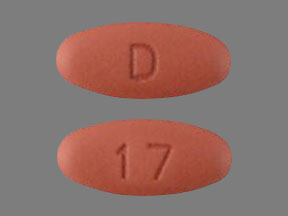Quinapril Dosage
Medically reviewed by Drugs.com. Last updated on Jun 21, 2023.
Applies to the following strengths: 5 mg; 10 mg; 20 mg; 40 mg
Usual Adult Dose for:
Usual Geriatric Dose for:
Additional dosage information:
Usual Adult Dose for Hypertension
Initial dose: 10 or 20 mg orally once a day in patients not on diuretics
Maintenance dose: 20 to 80 mg orally per day, administered as a single dose or in two equally divided doses
Use:
- Treatment of hypertension
Usual Adult Dose for Congestive Heart Failure
Initial dose: 5 mg orally twice a day
Maintenance dose: 20 to 40 mg orally per day administered in two equally divided doses
Comments:
- This dose may improve symptoms of heart failure, but increases in exercise duration have generally required higher doses.
- If the initial dosage is well tolerated, patients should then be titrated at weekly intervals until an effective dose.
Use:
- Management of heart failure as adjunctive therapy when added to conventional therapy including diuretics and/or digitalis
Usual Geriatric Dose for Congestive Heart Failure
10 mg orally once a day
Comments: Dose should be titrated the same way as for other adult patients.
Uses:
- Treatment of hypertension
- Management of heart failure as adjunctive therapy when added to conventional therapy including diuretics and/or digitalis
Usual Geriatric Dose for Hypertension
10 mg orally once a day
Comments: Dose should be titrated the same way as for other adult patients.
Uses:
- Treatment of hypertension
- Management of heart failure as adjunctive therapy when added to conventional therapy including diuretics and/or digitalis
Renal Dose Adjustments
CrCl greater than 60 mL/min: Initial dose: 10 mg orally once a day
CrCl 30 to 60 mL/min: Initial dose: 5 mg orally once a day
CrCl 10 to 30 mL/min: Initial dose: 2.5 mg orally once a day
CrCl less than 10 mL/min: Data not available
Liver Dose Adjustments
Data not available
Dose Adjustments
- Doses used for hypertension should be adjusted according to blood pressure response measured at peak (2 to 6 hours after dosing) and trough (predosing). Usually, dosage adjustments should be made at intervals of at least 2 weeks.
- In patients in whom the antihypertensive effect may diminish toward the end of the dosing interval, an increase in dosage or twice a day administration may be justified. Doses of 40 to 80 mg and divided doses give a greater effect at the end of the dosing interval.
- Doses used for heart failure should be titrated at weekly intervals until an effective dose is reached or undesirable hypotension, orthostasis, or azotemia precludes this dose titration.
- If blood pressure is not controlled, a diuretic can be added. An initial dose of 5 mg orally once a day should be administered with medical supervision and until blood pressure has stabilized.
- In the absence of excessive hypotension or significant deterioration of renal function, the dose may be increased at weekly intervals based on clinical and hemodynamic response.
Precautions
US BOXED WARNING:
- FETAL TOXICITY: When pregnancy is detected, discontinue use as soon as possible. Drugs that act directly on the renin-angiotensin system can cause injury and death to the developing fetus.
Safety and efficacy have not been established in patients younger than 18 years.
Consult WARNINGS section for additional precautions.
Dialysis
Hemodialysis and peritoneal dialysis: Little effect on the elimination of quinapril
Other Comments
Administration advice:
- If blood pressure is not adequately controlled with quinapril monotherapy, a diuretic may be added.
- To reduce the likelihood of hypotension, the diuretic should, if possible, be discontinued 2 to 3 days prior to beginning therapy with quinapril.
Storage requirements:
- Protect from light
Monitoring:
- Cardiovascular: Closely monitor blood pressure
- Renal: Closely monitor renal function
- Metabolic: Closely monitor electrolytes
Frequently asked questions
More about quinapril
- Check interactions
- Compare alternatives
- Pricing & coupons
- Reviews (11)
- Drug images
- Latest FDA alerts (2)
- Side effects
- During pregnancy
- Drug class: Angiotensin Converting Enzyme Inhibitors
- Breastfeeding
- En español
Patient resources
Other brands
Professional resources
Other brands
Related treatment guides
Further information
Always consult your healthcare provider to ensure the information displayed on this page applies to your personal circumstances.


